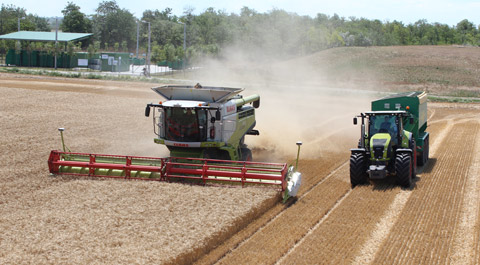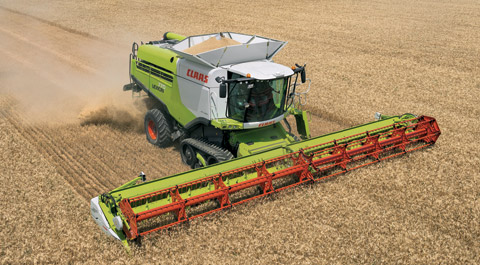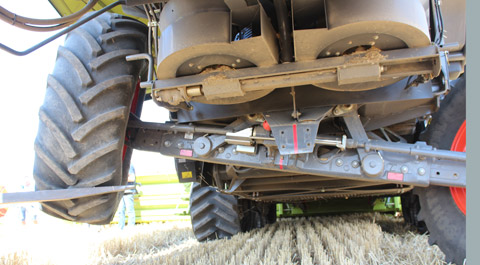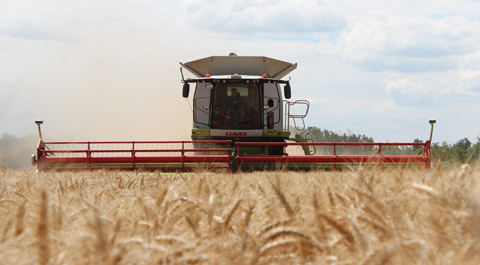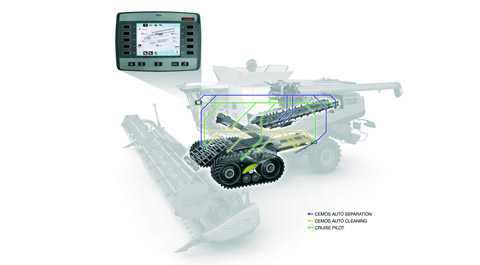Claas unveils bigger Lexion 780
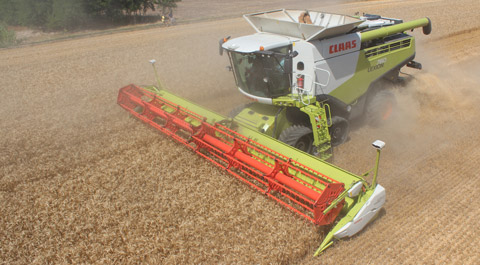
It seems there’s no stopping the conveyor belt of agricultural innovation.
Just weeks after Fendt’s demo of the driverless tractor, Claas has shown off its new, bigger Lexion 780 and its clever automatic combine adjustment system.
Claas says output on the monster Lexion 780 will increase by 10-12% over the current 770. And given that the 770 broke the eight-hour wheat record by harvesting 675.84t, it should eat through the wheat pretty quickly.
Upping the output is partly the result of adding an extra concave to the threshing system, meaning there are now six concaves under each rotor.
This change hasn’t taken up any more space though – the 770 had ample room for the extra concave but did not have the power to utilise it. So the combine’s dimensions have remained exactly the same.
To cope with the greater throughput, the Lexion 780’s grain tank capacity is now up to 12,500 litres and discharge rate is 130 litres/sec.
Cemos Automatic, an upgrade of the original Cemos system launched in 2010, will be an option on all 700-series Lexion combines, including the 780. Claas says it’s ideal for less experienced operators that have to adjust speed and clearance settings more accurately than ever.
Now the only job left to the operator is pressing the laser pilot button to activate the system, lift up at each end and unload grain when necessary. The combine will calculate the rest itself.
The system relies on sensors dotted through the combine and is split into two sections. The first is a separation section, which controls parts like the rotor speed and concave position. The second is the cleaning aspect, which includes blower speed and sieve settings. The two sections can be switched on and off separately.
When engaging Cemos Automatic the operator can choose a preferred strategy. There’s maximum throughput for those operating within tight weather windows, a setting for minimising fuel consumption or one for high threshing quality. A balanced strategy – a combination of the three settings that will probably be the most commonly used – is also an option.
Edward Miller, Claas steering specialist, reckons Cemos Automatic can save as much as 5% of harvest time. “Many farms are moving away from traditional straw walker machines to hybrid versions to increase combine output,” says Mr Miller. “The Cemos Automatic system should help encourage operators to push the machines enough to get the desired performance.”
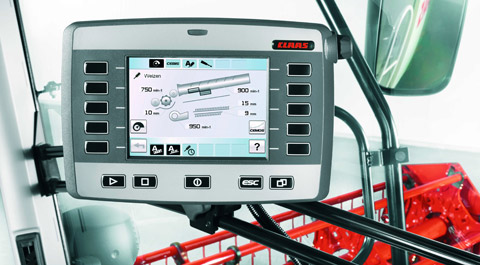
As usual, Claas has chopped and changed engines to suit the job.
On this occasion it’s a Stage 3b Mercedes-Benz power plant, which uses urea-based SCR emissions control rather than the EGR system on smaller Caterpillar engines.
It has a new cooling system, too. The variable fan drive only provides the cooling output required by the engine, which Claas reckons can mean an average saving of 20hp as full fan rpm only happens under fully loaded conditions.
Unusually, the cooling pack lies horizontally behind the engine. This means there’s more space for a larger fan and a 1.6m diameter filter.
That draws air in from above and forces it forwards towards the engine. The new louvre system then pushes the air sideways through the open panels. This creates a curtain effect around the combine to stop the dust from rising and entering the cooling system.
Axle
One noticeable upgrade for the new 780 combine is the pair of monster rear wheels. With a 1.6m diameter to increase the footprint, the Lexion’s axle is suspended at four points to make sure the wheels don’t catch the combine’s body when turning.
Other changes have seen hydraulic reaction time increased by 50%, while functions like auto-contour are 200% faster.

